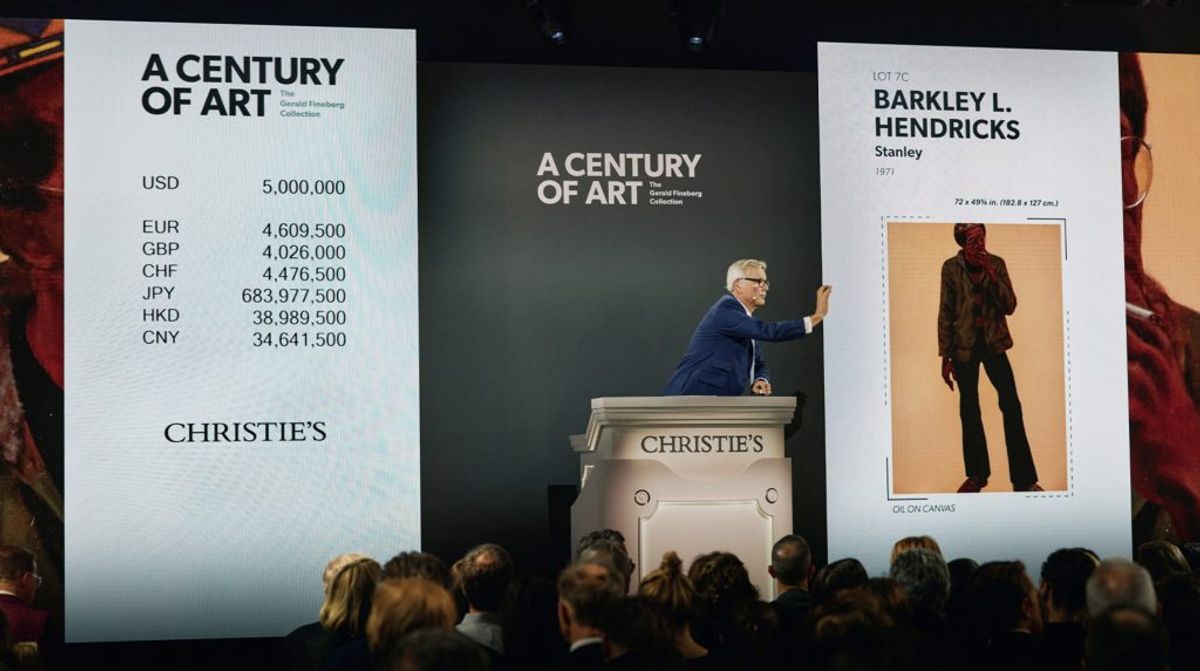Now that the economy has cooled, could auction houses become victims of their own success in propping up the art market? Auction results determine the mood, like it or not. Sotheby’s slick and successful hybrid auction in July 2020 warmed up an industry frozen by the Covid-19 pandemic. Then, in 2022, Christie’s returned the favour in New York with its high-octane sale of works from the collection of the late Microsoft co-founder Paul Allen, keeping the multimillion-dollar engine running.
Auction houses have become the investment banks of the industry, doing more than matching willing sellers to buyers. By lending money against works, structuring guarantees and then re-packaging some of these to third-party investors, they oil the whole market machine. This keeps sales—and thus fees and commissions—turning over. The public nature of auction transactions, even more visible thanks to livestreaming, also signals to the market and beyond that all is well, encouraging more supply and demand.
Or otherwise. Sales from May’s nine evening auctions in New York were down 42% on the previous spring’s season, according to ArtTactic, confirming what we all suspected: the art market is still vulnerable to economic wobbles.
This seems likely to damage the lucrative tools auction houses use behind the scenes to shield art prices from organic market conditions. Guarantees are a prime example. These both entice sellers into the market with a sure deal and prove to anxiety-prone buyers that demand exists. They also provide a tantalising opportunity to art-market financiers; a third-party guarantee means getting either a favourable price for a good work or a tidy profit for absorbing the auction houses’ risk.
Unfortunately, as demonstrated by Christie’s evening auction of Gerald Fineberg’s collection in New York in May—unguaranteed and disappointing—the increased presence of guarantees over the past ten years has become a self-fulfilling prophecy. When they don’t exist, the market gets spooked.
Meanwhile, their average return has shrunk. ArtTactic finds profits from guarantees decreased from 22% in 2021 to 11% in 2022. Its report concludes: “lower margins, coupled with interest rates on the rise and higher risks associated with the economic climate, could deter potential guarantors [in 2023].”
This puts the auction houses in a difficult financial position. Their best tool for boosting supply and pre-sale confidence is becoming less profitable and less persusasive to risk-sharing partners when they most need it to keep their increasingly expensive businesses going.
Lower-priced categories, which rarely command guarantees—including luxury goods, collectibles and fashion items—look to be taking up some of the slack at the moment. Offering sellers alternative incentives, such as a slice of the buyer’s premium, could keep the auction houses’ supply chain stable, albeit at the cost of lower profits. And, as we have seen in cooler periods before, works can be channelled through their private sales teams—though this area faces strong competition from the mega-dealers and sacrifices the PR benefits of public sales.
Auction houses are responsible for putting guarantees and other financial sweeteners in the mix, but right now they might be yearning for simpler times.


